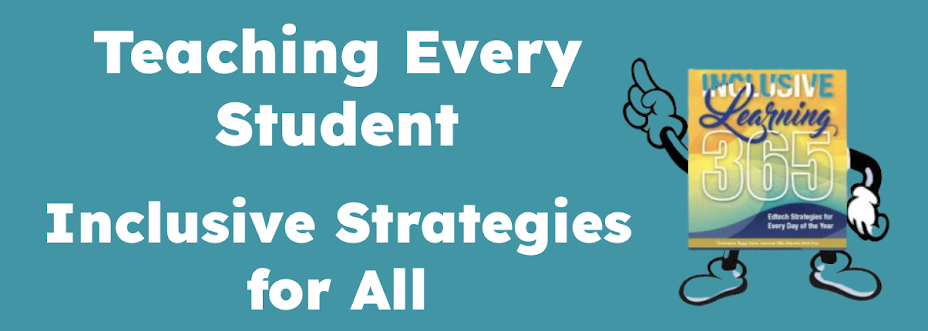
When I was in grad school, one of my professors, Richard Wanderman, an adult with learning disabilities, brought up the concept of "mistake tolerant" in the classroom. He specifically spoke about mistake tolerant vs. mistake intolerant materials and described clay as mistake tolerant (you don't like what you've created, you slab it back on the wheel and start again). Conversely, sculpting with stone is an example of a mistake intolerant medium (you make mistakes and may ultimately end up with a small pebble).
Look around your classroom. Are you paper/pencil dependent? Do your students sometimes erase so much or so hard that there are holes in their paper? Mistake intolerant.
Do you offer students multiple ways to demonstrate what they know using tools other than paper/pencil? For example, if they are required to write a book report, do you allow them to use a word processor or use multimedia to express their thoughts in more creative ways? Mistake tolerant.
Don't make the mistake of being mistake intolerant. Offer a variety of tools and methods that support your learners and that allow for errors. After all, it is through making mistakes that we learn some of life's greatest lessons.
Photo credit - http://www.flickr.com/photos/karpov85/2368271412/

5 comments:
I couldn't agree more Karen - mistakes are part of learning for sure. And as long as we are at least making mistakes, we are engaging........ And sometimes, just sometimes, mistakes lead to creative genius!!!! Happy New Year!
Thank you for that perspective. I really like the imagery here.
Just wrote about a student who needed a different vehicle for expression. I almost missed it but then an opportunity presented itself. We, as teachers, need to make sure we connect with our students as individuals so we can better address their unique needs.
Gail,
Thank you so much for the affirmation. We need to help teachers see things differently that support their learners and promote feelings of success rather than failure.
Colleen,
Curious to know what you did differently.
Glad you both stopped by.
Yes! Yes! Yes! That's was yelling as I read you post! It takes me at least four months to get the kids comfortable and be willing to take a risk that might end up being a mistake. The hardest class to re-school is always the "top" group. We have several conversations through out the year about taking a chance, risks, mistakes, etc.
So how do we get millions of teachers who are afraid of making mistakes to change their classrooms?
Thanks for commenting on my blog--I think yours is super and will add it to my reader.
This is such a great analogy. Sometimes in order to really learn one needs to make mistakes and learn from them. Learning requires flexibility and experimentation. I think that a teacher is mistake tolerant when he/she let students MOLD the path for learning.
I love the picture you chose for this blog. It's a great visual!
Post a Comment